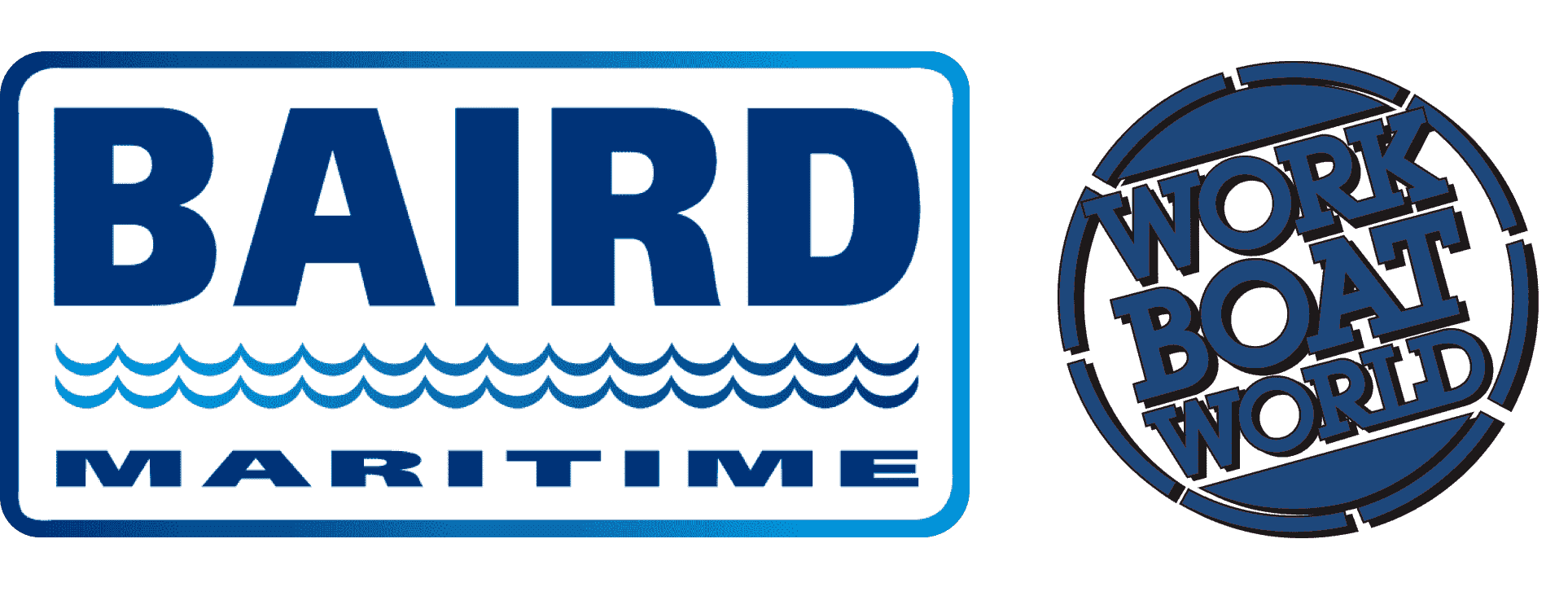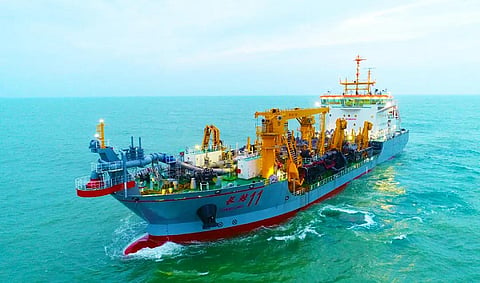VESSEL REVIEW | Chang Jing 11 – Chinese-built 6,000cbm dredger for Yangtze River maintenance works
Chinese state-owned shipyard Huangpu Wenchong Shipbuilding has handed over a new trailing suction hopper dredger (TSHD) to the Yangtze River Waterway Bureau.
Designed by China State Shipbuilding Corporation's (CSSC) 708 Research Institute in compliance to China Classification Society (CCS) rules, the aptly named Chang Jing 11 ("Long Whale 11") is notable for being one of the largest TSHDs in the world to be fitted with fully electric variable frequency motors to supply power for propulsion and for dredging equipment. This enables power to be easily distributed throughout the dredger as well as guarantee a range of available operating modes that can be employed under certain conditions. The ability to choose among the various operating modes means energy consumption is optimised, resulting in greater energy savings and reduced adverse environmental impact.
The newbuild will be used mainly to maintain the standard depth of 12.5 metres in the lower reaches of the Yangtze River and the deepwater channel of the Yangtze Estuary, though it will also be capable of taking on dredging works in coastal and offshore waters if needed.
The all-steel Chang Jing 11 has an LOA of 122 metres, a moulded beam of 24.8 metres, a moulded depth of 9.6 metres, and a nominal hopper capacity of 6,000 cubic metres or 11,600 tonnes. Three main engines that each produce 4,224 kW turn two electrically-driven propellers to deliver a free running speed of 14.8 knots while a 1,500kW generator set supplies power for the array of pumps and other dredging equipment.
The new TSHD utilises the same general layout, structure, and propulsion arrangement as those of its earlier sister Chang Jing 7, the first all-electric self-propelled TSHD to be built in Asia. The new dredger's hopper can accommodate an additional 3,000 cubic metres of material should the need arise, thus ensuring that fewer trips can be made between work sites and onshore material offloading facilities. The newer vessel is also versatile enough to be utilised for dredging a broad range of material types such as clay, silt, medium-fine sand, coarse sand, gravel, and pebbles up to a maximum depth of 38 metres.
Even when conducting heavy duty dredging operations, vibration and noise are noticeably reduced thanks to adequate insulation. Comfort is further enhanced through air conditioning provided by Josun.
Chang Jing 11 comes equipped with intelligent dredging and energy management systems to further optimise operations and thus help keep energy consumption levels as low as possible without compromising performance. The TSHD is also capable of conducting pre-dredging surveys in shallow waters to reduce reliance on other vessels.
| Chang Jing 11 | |
| SPECIFICATIONS | |
| Type of vessel: | Trailing suction hopper dredger |
| Classification: | China Classification Society |
| Flag: | China |
| Owner: | Yangtze River Waterway Bureau, China |
| Designer: | 708 Research Institute, China |
| Builder: | Huangpu Wenchong Shipbuilding, China |
| Hull construction material: | Steel |
| Superstructure construction material: | Steel |
| Deck construction material: | Steel |
| Length overall: | 122 metres |
| Beam: | 24.8 metres |
| Depth: | 9.6 metres |
| Capacity: | 6,000 cubic metres |
| Main engines: | 3 x 4,224 kW |
| Propulsion: | 2 x propellers |
| Generator: | 1,500 kW |
| Maximum speed: | 14.8 knots |
| Other electronics: | Intelligent dredging system; intelligent energy management system |
| Dredging equipment: | Pumps |
| Other equipment installed: | Josun air conditioning |
| Type of fuel: | Diesel |


